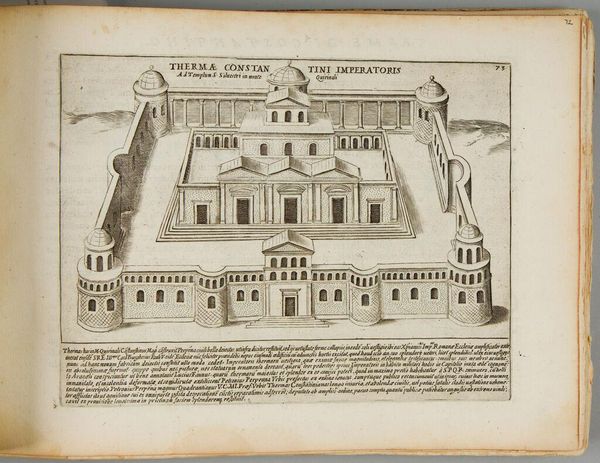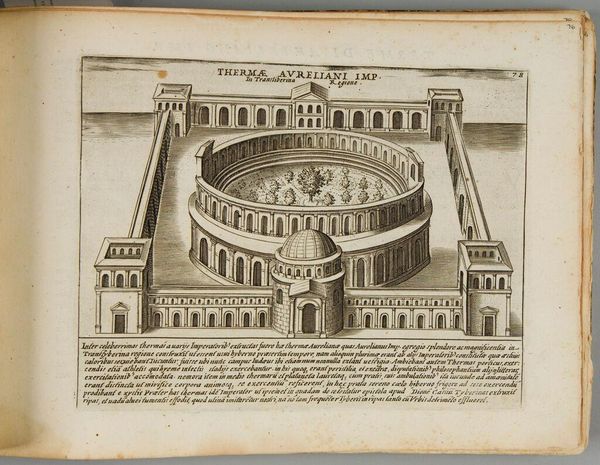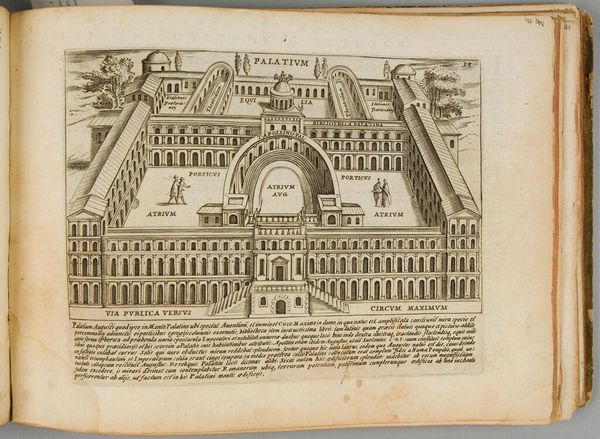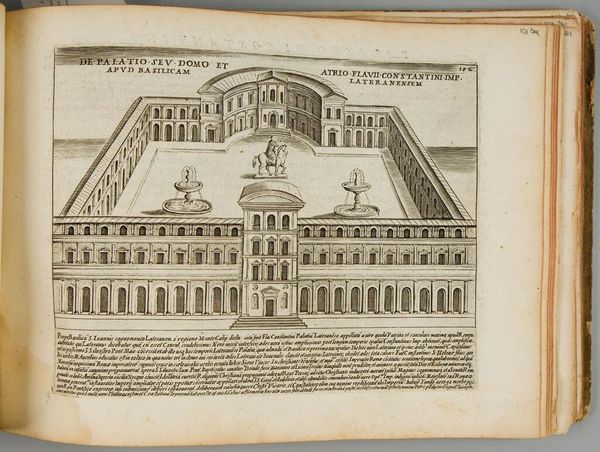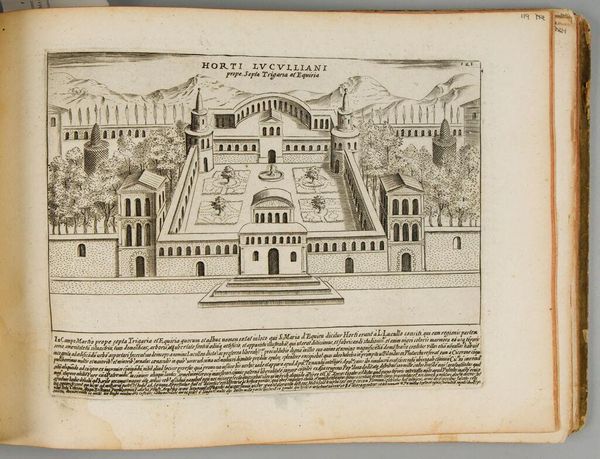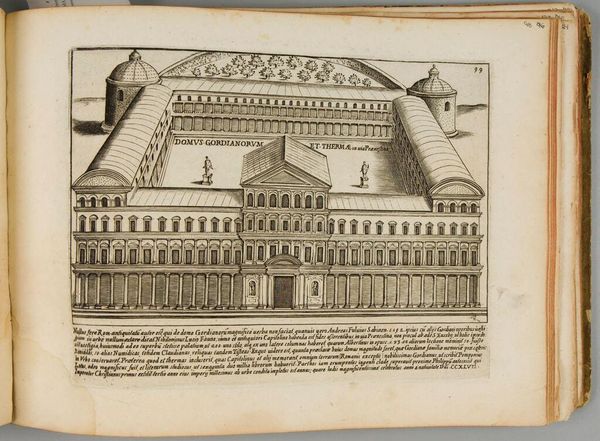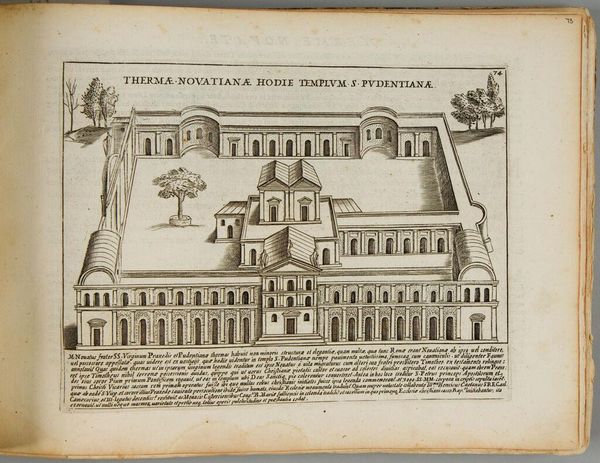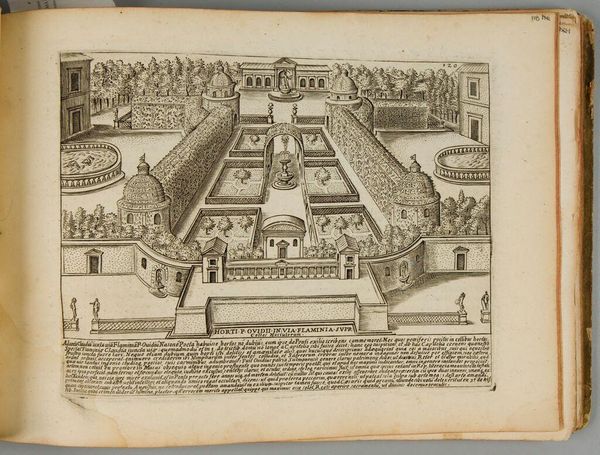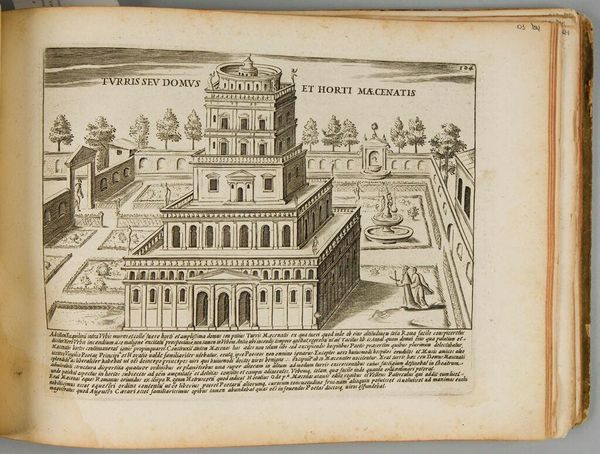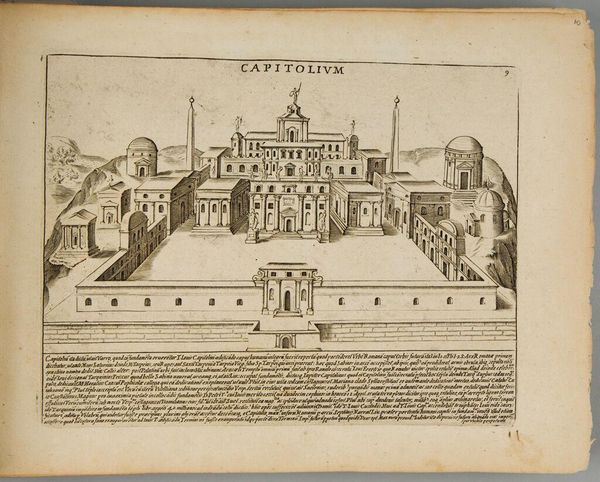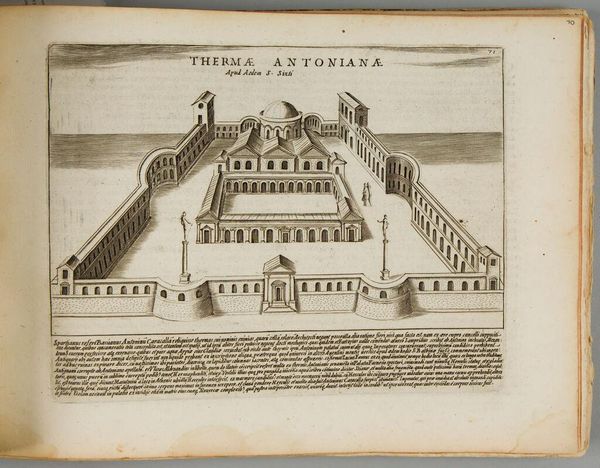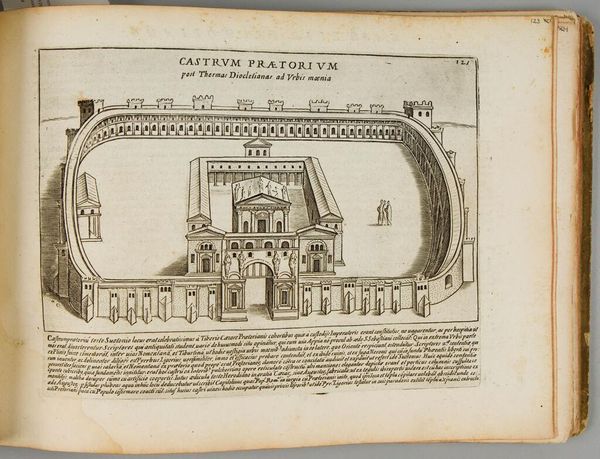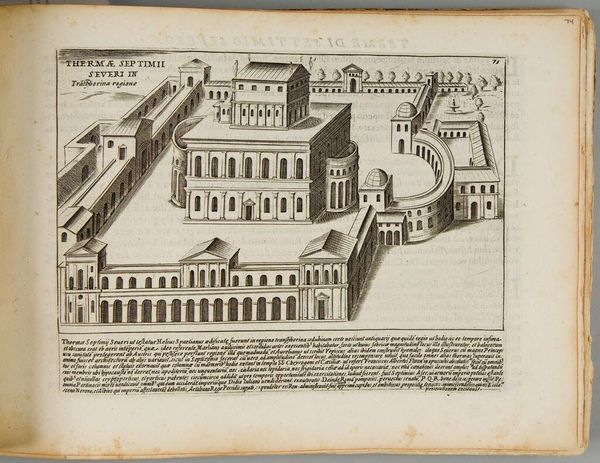
The Baths of Nero and Severus Alexander, later the Church of Saint Eustace 1641
0:00
0:00
Dimensions: plate: 18 x 23.5 cm (7 1/16 x 9 1/4 in.)
Copyright: CC0 1.0
Editor: This is Giacomo Lauro's print depicting the Baths of Nero and Severus Alexander, later the Church of Saint Eustace. The precision of the lines and labels give it a technical feel, but I'm struck by how this grand, secular space was repurposed into a church. What does that transformation signify to you? Curator: It's a powerful visual testament to shifting power dynamics. The transition from Roman baths, a symbol of imperial leisure and public life, to a church reveals the rise of Christianity and its appropriation of earlier cultural spaces. Consider the implications of erasing pagan spaces, reimagining them to serve a new dominant ideology. What does it mean to build your sacred spaces on top of another's? Editor: It speaks volumes about cultural conquest and the imposition of new belief systems. Curator: Precisely. And how that translates into the built environment. It makes you think about colonialism, doesn't it? How are spaces reshaped to reflect cultural dominance? Editor: Absolutely, it's a recurring theme throughout history. It's fascinating to consider this print as a record of that ongoing process. Curator: Indeed. Art like this helps us understand how space, power, and belief are inextricably linked.
Comments
No comments
Be the first to comment and join the conversation on the ultimate creative platform.

